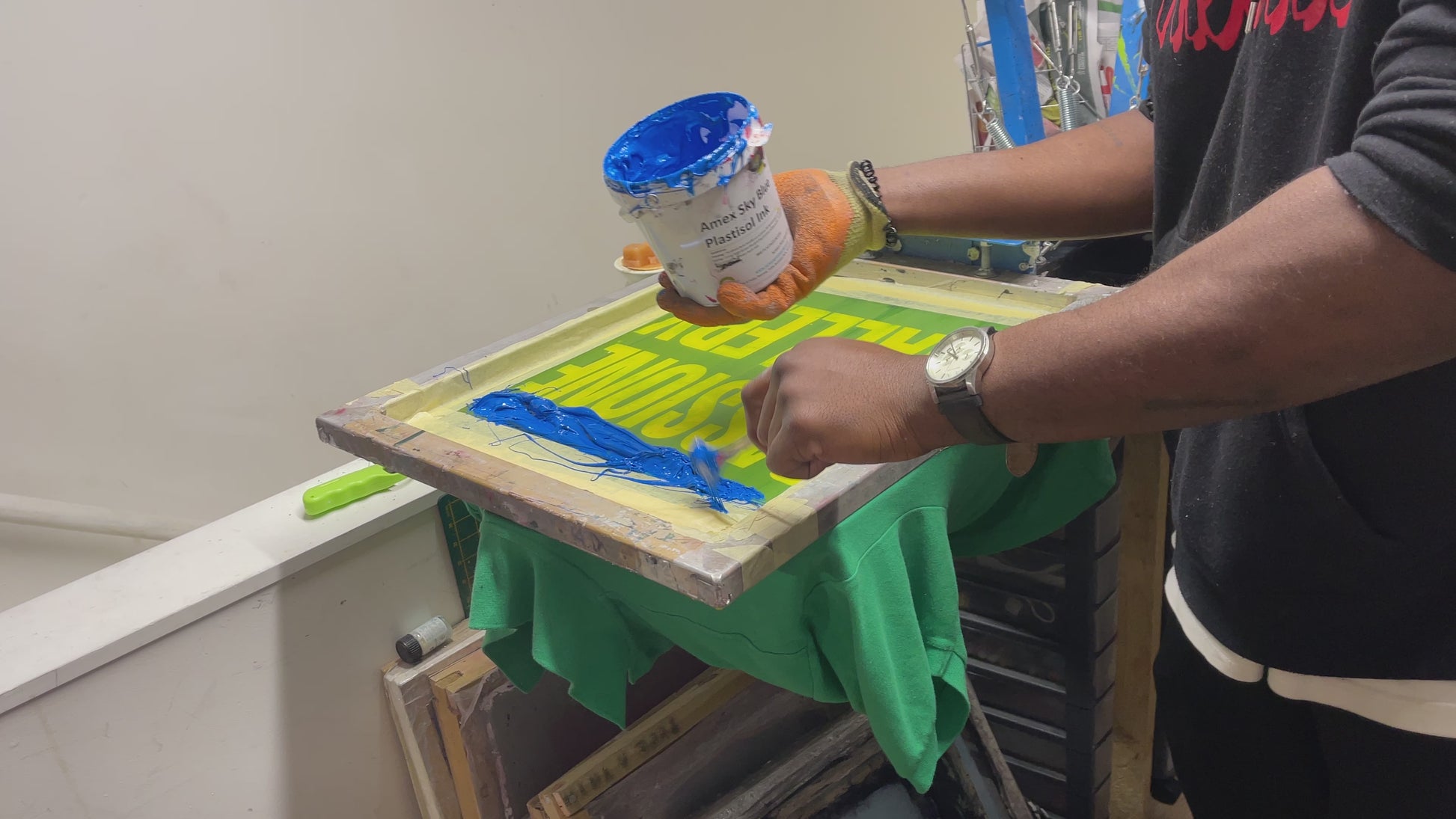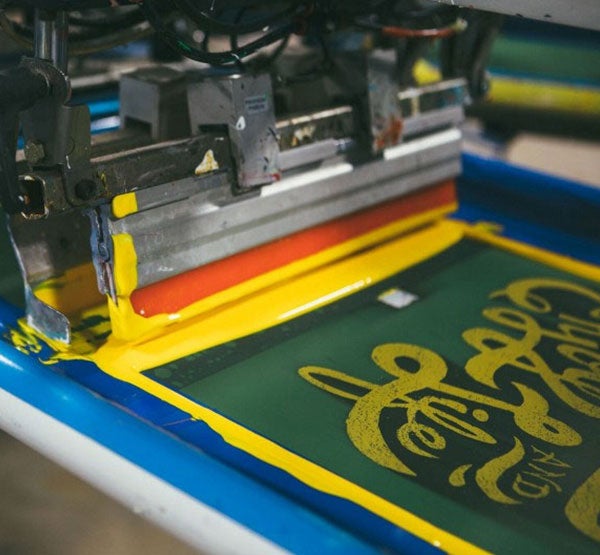Best Local T-Shirt Printing for Personalized Apparel
Wiki Article
Display Printing Uncovered: Everything You Required to Find Out About Tee Shirt and Garment Printing Methods
Screen printing is a fascinating technique that integrates art with technique, providing endless opportunities for imagination. Ready to explore the necessary elements that make display publishing an art kind?
The Basics of Display Printing: How It Works
When you plunge right into display printing, you'll uncover it's both a science and an art. At its core, screen printing entails producing a stencil, or display, that permits ink to pass via just in particular locations.Following, you'll blend your inks and prepare your printing surface. Setting the screen over the material, then utilize a squeegee to push ink with the display onto the garment. This procedure needs accuracy, as you desire clear, dynamic prints. After printing, you'll treat the ink with warm, ensuring it complies with the material and lasts through washes. Each action is necessary, and mastering them will raise your display printing skills, transforming simple garments into unique, meaningful items.
Kinds of Screen Printing Strategies
When you grasp the essentials of screen printing, it's time to check out the various methods that can elevate your layouts. One preferred method is standard display printing, where ink is pushed via a stenciled display.If you're going for great information, consider discharge printing. This strategy gets rid of dye from the textile, leaving a soft, vintage look. An additional option is plastisol printing, recognized for its sturdiness and vibrant shades, making it a favorite for numerous brands. Experiment with halftone printing to create gradient impacts and complex layouts. Each method has its distinct charm, so do not be reluctant to attempt them out to locate what suits your design best!
Important Tools for Screen Printing
To attain spectacular lead to screen printing, having the best devices is fundamental. First, you'll need a sturdy screen printing framework, which holds the mesh that moves your style onto the garment. Next off, buy high-quality squeegees; these are necessary for applying ink uniformly throughout the display. You'll additionally call for an excellent exposure system to produce your screens, along with a washout cubicle for cleansing them after use. A trusted warm resource, like a conveyor clothes dryer or warm press, is vital for curing your prints to ensure longevity. Do not neglect an appropriate work area, outfitted with tables and storage space for your materials. Ultimately, protective equipment, such as masks and gloves, will keep you secure from chemicals and inks. With the right tools, you'll be well on your way to producing professional-quality prints.Picking the Right Inks and Products
When selecting inks and materials for screen printing, you require to take into consideration the kind of ink that functions ideal for your task. Assume concerning textile compatibility to assure your layouts look last and great lengthy. Discover eco-friendly ink choices to make your printing process a lot more sustainable.Sorts Of Screen Inks
Selecting the ideal screen ink is important for accomplishing vivid, durable prints that fulfill your project's demands. There are numerous sorts of screen inks to analyze. Plastisol ink is prominent for its convenience and ease of use, offering excellent shade opacity on dark fabrics. Water-based ink, on the various other hand, offers a softer feeling and is environmentally friendly, making it perfect for those looking to lessen their environmental effect. Release inks get rid of dye from the textile, resulting in a soft, classic appearance but call for details handling. Lastly, specialty inks, such as metallic or glow-in-the-dark, can include one-of-a-kind results to your styles. Assess your job needs and select the ink that aligns best with your desired outcome.
Fabric Compatibility Factors To Consider
Understanding textile compatibility is crucial for attaining premium display prints, particularly because various materials respond distinctively to various inks. Always check your inks on example textile to ensure they stick correctly and preserve color integrity. In addition, maintain in mind that material weight and appearance can affect the last outcome, so choosing the appropriate ink and material combo is crucial for your project's success.Eco-Friendly Ink Options
Green inks are ending up being a preferred choice for screen printers that wish to minimize their environmental effect while keeping quality. When choosing inks, take into consideration water-based inks, which are less damaging and easier to clean up compared to conventional solvents. These inks bond well with textiles, providing lively results without toxic chemicals. You may likewise discover eco-solvent inks that use fewer unstable natural substances (VOCs), making them a more secure alternative for both your health and the planet.In addition, seek inks made from renewable energies, such as soy or vegetable-based options. By picking the ideal inks and products, you'll not just develop spectacular styles but additionally add to a more sustainable printing process. Make the button, and your prints will show your dedication to the setting!
Preparing Your Design for Screen Printing

Submit Layout Demands
To guarantee your design looks sharp and lively on fabric, you'll need to pay close focus to submit format needs for screen printing. Make sure your style has a clear background to prevent undesirable white edges on your prints. Keep shade modes in mind; CMYK is standard for display printing, so convert your RGB creates as necessary.Shade Separation Techniques
Shade splitting up is an essential action in preparing your style for display printing, and understanding it can greatly boost your print top quality. You'll require to damage your layout into private shades, as each shade requires a different screen throughout printing. This accuracy not only ensures precise color depiction yet also enhances the printing procedure.Resolution and Size
Accomplishing the ideal lead to display printing starts with guaranteeing your design has the appropriate resolution and size. Ideally, your artwork needs to be at least 300 DPI (dots per inch) for sharp, clear prints. Your last item may look less than professional and pixelated. if you utilize reduced resolution.When it involves size, think about the measurements of your print custom screen printing location. Design your artwork to match the last print size, ideally creating it in the real measurements you'll be printing. By doing this, you'll avoid any unforeseen scaling issues.
Constantly check your design in both vector and raster layouts. Vector graphics can be scaled without shedding high quality, making them excellent for screen printing. Preparing correctly will assure your layout looks impressive on every garment!
Step-by-Step Screen Printing Process
Display printing is a dynamic procedure that allows you to create vivid styles on numerous surface areas. To obtain begun, you'll require a screen, emulsion, and your picked ink.Pour ink onto the display and utilize a squeegee to press the ink through the pattern onto the material. Raise the display carefully and allow the print dry. You've successfully screen published your layout.
Tips for Successful Display Printing Projects
While you're diving into your screen printing tasks, keep in mind that prep work is crucial to success. Beginning by collecting all your products-- inks, mops, displays, and garments. A tidy work space helps protect against undesirable errors, so clean up prior to you begin.Following, confirm your artwork is high-resolution and appropriately sized for your garment. Test your screen for proper direct exposure and clean it extensively to stay clear of spots. When mixing your inks, adhere to the supplier's guidelines to achieve the best consistency.
Throughout printing, apply also stress with your squeegee for consistent results. Do not hurry; take your time to confirm each print meets your requirements. After printing, let your garments completely dry completely prior to dealing with or packaging them.
Last but not least, constantly maintain an example of your work for future referral. By doing this, you can evaluate your development and enhance your techniques over time. Delighted printing!

Regularly Asked Concerns
The length of time Does It Take to Establish a Display Printing Job?
Setting up a screen printing task generally takes around thirty minutes to an hour. You'll prepare the displays, mix inks, and change the press. The time differs based upon intricacy and experience, so stay organized!Can I Print on Various Material Types Making Use Of the Same Technique?
Yes, you can publish on various fabric types utilizing the same technique, but you'll need to adjust your setups and inks. Some fabrics take in ink differently, so trying out assurances the most effective outcomes for each and every product.What Prevail Errors to Prevent in Screen Printing?
When screen printing, avoid typical blunders like using the wrong ink, overlooking correct direct exposure times, or missing pre-press checks. Always test your setup and maintain tidy displays to assure top quality results each time.Exactly How Can I Appropriately Tidy and Preserve My Display Printing Tools?
To properly clean and keep your screen printing tools, you ought to regularly clean displays with ideal solvents, inspect squeegees for wear, and assure all devices are saved completely dry and dust-free. Consistency boosts and avoids costly repair work efficiency.Is Screen Printing Eco-friendly Contrasted to Various Other Techniques?
Display printing can be more eco pleasant than various other methods, particularly if you utilize eco-conscious materials and water-based inks. By picking sustainable supplies and techniques, you minimize waste and reduce your influence on the world.Screen Printing Uncovered: Whatever You Required to Know Concerning Tee and Garment Printing Methods
At its core, display printing includes developing a pattern, or screen, that enables ink to pass through only in specific areas. Position the display over the fabric, after that utilize a squeegee to push ink via the screen onto the garment. One popular technique is standard display printing, where ink is pressed with a stenciled display.When choosing inks and materials for display printing, you require to take into account the type of ink that works finest for your task.
Report this wiki page